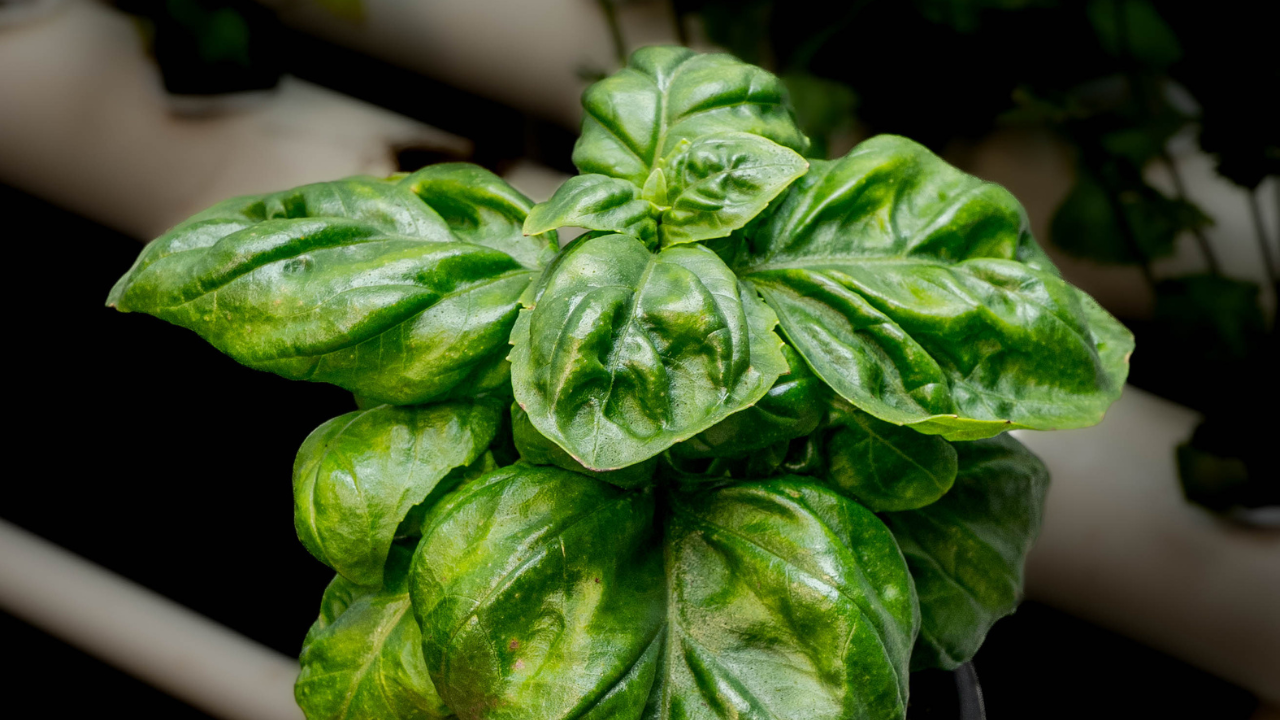The Science of Growing Vibrant Basil: Choosing the Right Medium, Nutrients & MicrobesUpdated 2 days ago
Overview
Basil is one of the most rewarding herbs to grow — fast, fragrant, and packed with flavor. But achieving lush, deep-green foliage and steady, aromatic growth takes more than sunlight and water. It requires a balanced understanding of root environment, nutrient ratios, and beneficial microbial activity.

This article explores the science behind basil cultivation, explaining how to build the ideal foundation for thriving plants — from growing medium to nutrition and microbial support.
Step 1: Build a Strong Foundation with the Right Growing Medium
The foundation of healthy basil begins below the surface. The root zone is where nutrient absorption, water balance, and oxygen exchange happen — all of which directly determine the vigor of your plant.
What Makes a Good Basil Growing Medium
An ideal medium for basil should be:
Well-aerated to allow oxygen flow around roots
Moisture-retentive yet well-draining to avoid soggy roots
Microbially active to promote nutrient cycling and soil health
High-porosity mixes like Pro-Mix HP serve as a great example of this balance. These blends usually combine peat moss, perlite, and beneficial mycorrhizae to improve drainage while supporting microbial life.
Why Aeration and Drainage Matter
Basil roots are highly sensitive to compaction and poor airflow. Without oxygen, roots can’t efficiently absorb nutrients — leading to stunted growth and yellowing leaves. Using a high-porosity, microbe-rich mix ensures:
Faster root expansion
Improved nutrient absorption
Protection from root rot and anaerobic conditions
💡 Tip: If mixing your own medium, aim for a blend of 70% peat or coco coir and 30% perlite for optimal drainage and structure.
Step 2: Feed for Balanced Growth
Once your root zone is optimized, nutrition becomes the key to unlocking basil’s full potential. As a leafy herb, basil relies heavily on nitrogen, calcium, and magnesium for lush, aromatic foliage.
🌿 Understanding Basil’s Nutrient Needs
Nutrient | Function | Signs of Deficiency |
|---|---|---|
Nitrogen (N) | Promotes leafy green growth and vigor | Pale yellowing leaves, stunted growth |
Phosphorus (P) | Supports root development and energy transfer | Purple leaf undersides, slow establishment |
Potassium (K) | Aids water balance and disease resistance | Weak stems, poor flavor |
Calcium (Ca) | Strengthens cell walls, prevents curling | Leaf tip burn or curling |
Magnesium (Mg) | Boosts chlorophyll and photosynthesis | Interveinal yellowing |
Example Feeding Approach
Using a balanced base nutrient such as Bonnie (6-5-4) paired with CalMag (2-0-0) provides an excellent nutrient spectrum for basil.
Bonnie (6-5-4) → Supplies nitrogen for vigorous leaf growth, with moderate phosphorus and potassium for root and stress support.
CalMag (2-0-0) → Prevents calcium and magnesium deficiencies, ensuring strong cell walls and deep-green foliage.
Apply nutrients every 1–2 feedings, adjusting based on leaf color and plant response.
💡 Pro Tip: Basil prefers slightly lower EC levels (1.0–1.4) to prevent nutrient burn, especially under warm or bright growing conditions.
Step 3: Supercharge Growth with Beneficial Microbes
Why Microbes Matter
Beneficial microbes are the invisible workforce of your growing medium. They:
Break down organic compounds into plant-available nutrients
Colonize root surfaces to improve nutrient uptake
Suppress pathogens by outcompeting harmful bacteria
A microbial inoculant such as Monkey Juice, which contains Bacillus subtilis and Bacillus licheniformis, can drastically improve basil health and growth rate.
These bacteria help build a resilient rhizosphere, resulting in:
Faster root growth
Increased nutrient efficiency
Stronger stress tolerance
💡 For soil or coco-based grows, microbial activity is a major factor separating “good” basil from “exceptional” basil.
Step 4: Optimize Your Growing Environment
Even with perfect nutrition, basil won’t thrive without the right environmental control.
Light
Basil prefers 12–16 hours of bright light daily. Indoors, LED grow lights should deliver 400–600 µmol/m²/s PAR intensity.
Temperature
Maintain 70–80°F (21–27°C) for consistent growth. Basil slows below 65°F and can suffer from cold stress.
Watering
Keep the medium evenly moist — never soaked. Allow the top inch to dry slightly before watering again. Good aeration (like in high-porosity mixes) helps maintain this balance.
Airflow
Gentle airflow prevents fungal growth and encourages stronger stems.
The Results: Vigorous, Fragrant Basil
When you combine a well-aerated medium, balanced nutrients, beneficial microbes, and controlled conditions, basil responds with explosive growth:
Deep green, aromatic leaves
Strong stems and full canopies
Faster regrowth after harvest
This approach creates the kind of basil chefs dream about — flavorful, aromatic, and visually striking.
Takeaways for Growers
✅ Start with a high-porosity medium — basil roots need oxygen and space to thrive.
✅ Feed for balance — use nitrogen-rich nutrients with added calcium and magnesium.
✅ Inoculate with beneficial microbes to improve nutrient uptake and soil health.
✅ Control your environment — warmth, light, and air movement are essential for strong growth.
By understanding the science behind these principles, you’ll grow basil that’s not just healthy — but extraordinary.
Summary
Basil’s beauty lies in its simplicity, but growing exceptional basil requires a scientific approach. Every factor — from aeration to microbial health — contributes to a balanced ecosystem that drives lush growth and superior flavor.
Whether you’re cultivating basil for your kitchen, your market, or your greenhouse, the formula is universal: great roots, great nutrition, great environment.